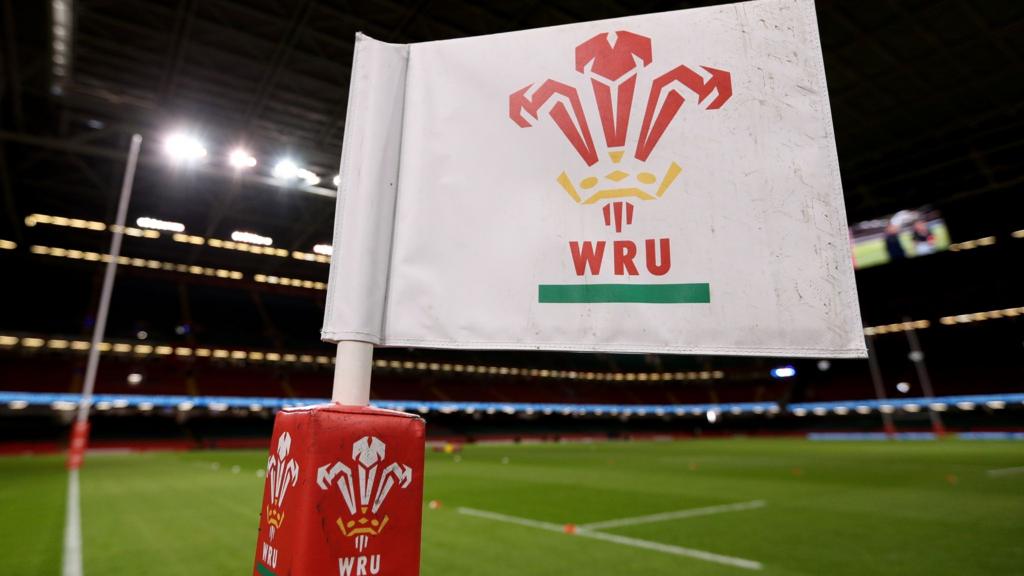The Welsh Rugby Union has asserted that the current structure of domestic rugby is financially unsustainable.
In a significant move, the Welsh Rugby Union (WRU) is expected to propose reducing the number of professional teams in Wales from four to two.
The governing body has developed a comprehensive plan that includes what it terms an “optimal solution” for revitalizing the struggling sport.
The WRU is anticipated to unveil its preferred proposals this week, which will involve the creation of two organizations, each fielding both men’s and women’s teams.
A six-week consultation period will follow, during which the Union will present its favored option to stakeholders. A final decision on the plans is expected by the end of October.
Currently, Cardiff, Dragons, Ospreys, and Scarlets represent the four professional men’s sides in Wales. However, the WRU is suggesting a reduction to half that number.
This news arrives despite Ospreys’ plans to relocate to a renovated stadium at St Helen’s in Swansea for the 2026-27 season, and Scarlets’ recent announcement of new investors.
Dragons have stated this week that elite professional rugby must remain in Gwent, while Cardiff is currently under the ownership of the WRU.
WRU boss Tierney to step away after cancer diagnosis
Welsh rugby ‘optimal solution’ to be unveiled
WRU considers cutting up to two regional teams
New director of rugby Dave Reddin, chief executive Abi Tierney, and chair Richard Collier-Keywood have been integral to the development of this plan.
It remains unclear whether the two proposed future sides will be newly formed entities or existing teams.
The WRU has, however, proposed that there will be two organizations, each with a men’s and a women’s team.
Each men’s squad could consist of 50 players, with a budget of £7.8 million, while the women’s squads would have 40 players each.
The WRU states that significantly increased funding for each men’s squad would allow for a radically different talent profile and level of support.
The Union emphasizes that the two squads would primarily feature Welsh-qualified players, and there would be a re-evaluation of non-Welsh qualified players.
The WRU would fund the two men’s and two women’s teams, all operating under licenses, with the governing body entrusting owners or investors with all commercial operations.
Phase one would involve the relocation of the two men’s and women’s teams, operating across two sites.
There will also be a transition to contracting players and staff within centralized national academies.
Phase two would involve the clubs moving to training at a single site, designated as a national campus.
This campus will accommodate 400 individuals, including men’s and women’s national staff, professional and club staff, and national academies. The men’s and women’s academies will be centralized.
The proposals include raising the standard of the Super Rygbi Cymru competition, which currently sits below the fully professional men’s game.
There is also a commitment to establishing a senior women’s domestic competition, acknowledging the current lack of high-quality club rugby below the Celtic Challenge, where Gwalia Lightning and Brython Thunder compete.
The WRU stated in July that the current system was failing and unsustainable, prompting a search for a more radical strategy.
This followed Wales’ men’s side losing a record 18 consecutive international matches and falling to 12th in the world rankings, while the four regions struggled in the United Rugby Championship (URC) and European competitions.
The WRU and the regions had been working to finalize a new deal after months of negotiation.
A sign of progress appeared in February when the new Professional Rugby Agreement (PRA) was agreed in principle, with all parties prepared to sign in early April.
However, the process was disrupted when Cardiff entered temporary administration later that month and was taken over by the WRU, which absorbed £9 million of the club’s debt in the process.
Scarlets and Ospreys sought clarity from the WRU but stated that “key issues” regarding concerns about favoritism toward Cardiff remained unresolved.
Dragons and Cardiff signed the PRA, while Scarlets and Ospreys did not in May.
The WRU responded by stating that it did not intend to continue equally funding four professional teams in the men’s game, opening the door for a potential reduction in the number of sides.
The number of professional sides in Wales was last reduced in 2004, when the Celtic Warriors ceased operations after only one year of competition.
This followed Welsh rugby’s shift from the professional club model to a regional system of five sides in 2003.
Ospreys agree St Helen’s lease as Bridgend host 2025-26 games
Scarlets announce new investment from US company
Dragons say ‘elite rugby’ must remain in Gwent
Comments can not be loaded
To load Comments you need to enable JavaScript in your browser

